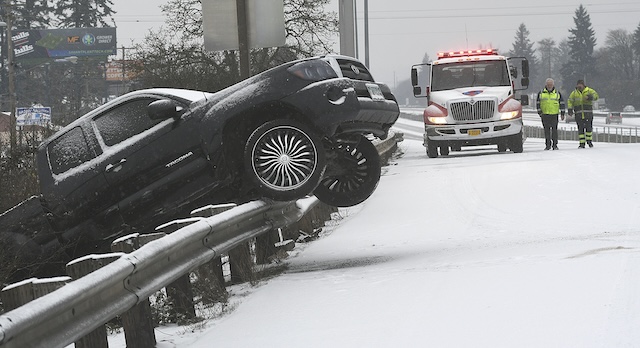Officers nostalgic as Crown Vic era ends
Published 5:00 am Wednesday, August 14, 2013
SPOKANE, Wash. — The greatest muscle car that ever wore a uniform is now racing toward retirement. After more than a decade as the most widely used law enforcement vehicle in the nation, the Ford Crown Victoria Interceptor — the Vic, as it has become known — went out of production in 2011.
And this summer, through whatever mysterious karma shapes the police universe, Trooper Randy Elkins was assigned to be the driver and keeper of the last Vic purchased by the Washington State Patrol. “It’s kind of the end of an era,” Elkins said from behind the wheel of Unit 606 on a recent morning during rush-hour patrol here in Eastern Washington, near the Idaho border. “My goal is to keep it to the end, right to the last mile.”
Law enforcement is a practical, left-brain business of protocol and procedure. But a discussion of the Vic brings out a romantic side. The traditions and symbols of life behind the badge become intertwined with its tools. Two tons of rear-wheel drive and a V-8 engine up front made for a machine that could feel safe at any speed, a reliable nonhuman partner when things got crazy.
“That was a big part of it,” said Lt. Dan McCollum, the fleet manager with the Kansas Highway Patrol. “If you had any severe crash or a hairy situation with a Crown Vic, you could become real attached to it when it performed well and either saved your life or protected you from great bodily harm.”
There have been other flings. In the mid-1960s, the Plymouth Belvedere became an iconic police vehicle, stamped into the popular culture by television shows like Adam-12, where the whole world, at least in early episodes, was seen from behind the windshield of one. Joe Friday and Bill Gannon of Dragnet fame cruised in a Ford Fairlane.
For Elkins, part of the Vic’s appeal is its sheer size, which is one reason, in the era of constricted government budgets, that the Vic’s reign came to an end. Compared with lighter and more fuel-efficient newer designs — notably the Chevrolet Caprice, which the Washington State Patrol is now buying — the Vic increasingly seemed like a relic.
What you got in return for 13 or so miles per gallon, though, was leg room, important for a 6-foot-4 officer like Elkins, and ample space to serve as a rolling locker room of police equipment.
Far more than it ever was in Joe Friday’s era, or Andy Griffith’s for that matter (he and Barney Fife drove around Mayberry in a black and white Ford Galaxie), an officer’s vehicle is also now an office. Mobile communications technology means there is no need to return to the base or precinct for paperwork.
And the office is jammed: the laptop at Elkins’ right elbow, with the printer below, is positioned right in front of the unit’s AR-15 semi-automatic rifle and 12-gauge shotgun, locked up between the front seats. Radio, video and radar equipment fills the spaces between. Extra handcuffs are stuffed into door compartments. The trunk is filled with roadside emergency supplies: flares, a shovel, a first-aid kit.
Yes, the Caprice is probably peppier, Elkins conceded. But it is not all about 0 to 60. Like his wide-brimmed trooper hat, which he carefully puts on as he exits the car to approach a vehicle he has pulled over, the Vic, he said, declares his identity. Because Ford stopped making the car for the consumer market, the Interceptor’s distinctive grille is enough to stir law-abiding impulses when spotted in a speeder’s rearview mirror.
“There’s a lot of history behind the uniform — what we wear and the way we wear it, even the way we polish our buttons,” said Elkins, the son of a mechanic and a grocery store worker, who grew up in Spokane. “It’s the same with the vehicle. It projects an image.”
The Kansas Highway Patrol so loved its Vics that it sought out and bought the last of the last — the final police-equipped Interceptor ever to leave the Ford line in 2011. McCollum, the fleet manager, said the department considered using the vehicle for regular duty, but decided that it deserved an easier road, safe from the risk of damage and mayhem. It is driven, a little, but gently, he said — mostly to parades, recruitment drives and special occasions when ceremony counts more than horsepower.
But here in Unit 606, designated by Elkins’ badge number, the road still beckons. The car covers about 1,000 miles a week and has 27,000 miles logged. At that rate, the 140,000-mile fleet-designated retirement cutoff could come within a couple of years, barring damage, which is always a risk in the line of duty.
In the meantime, the tree-shaped air-freshener hanging in an equipment-free space on the passenger side speaks of hope eternal. It reads: “New car scent.”








